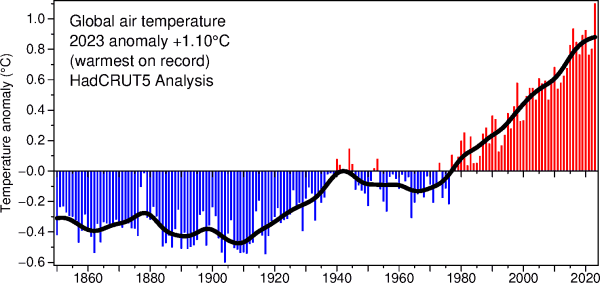What is Global Boiling?
You were well aware of Global Warming all these days. But, now there is a newer challenge to be faced. The time for global warming has ended.
The new era has begun and it is Global Boiling.
Yes, the UN has stated that the consequences of global warming have had adverse effects on earth and now it has gone to the extreme stating that “Humanity is on the hot seat”. This confirmation comes after the scientists have confirmed that July turned out to be the world’s hottest month to be recorded.
6th July 2023 recorded the hottest day on Earth ever since the global temperatures reading taken in The year 1979 where the average temperatures were 17.18ºC. The numbers are taken from the United States’ Environmental Prediction.
It is a well known and obvious fact that the temperatures have risen over the years and the consequences are being faced through extreme heat and harsh cold climates. The animal chain too has been affected adversely due to the change in temperatures.
The global temperature has risen from an average of 16.25ºC recorded between 25 July 1979 to 25 July 2000. This year on 25 July 2023, the temperature recorded was 17.14ºC.
July is now the hottest month ever recorded.
Every year the global temperatures are evaluated and recorded by scientists who examine and record the data from the four main outlets, which are as follows
1 Met UK Office Hadley Centre
2 University of East Anglia’s Climatic Research Unit

Source: https://www.uea.ac.uk/groups-and-centres/climatic-research-unit
3 The Nasa Goddard Institute for Space Science
4 The National Oceanic and Atmospheric Administration along with Japan Meteorological Agency.
10 significant steps to tackle the global temperatures
Addressing global temperatures and combating climate change is a complex challenge that requires a multifaceted approach. Here are 10 significant steps that help to overcome global temperatures and mitigate the impacts of climate change:
1 Transition to Renewable Energy: Rapidly shift from fossil fuels (coal, oil, and natural gas) to renewable energy sources (solar, wind, hydro, geothermal) to reduce greenhouse gas emissions from energy production.
2 Energy Efficiency: Improve energy efficiency in all sectors, including buildings, transportation, and industry, to reduce energy consumption and lower emissions.
3 Afforestation and Reforestation: Increase efforts to plant trees and restore forests, as they absorb CO2 from the atmosphere and act as carbon sinks.
4 Sustainable Transportation: Promote public transportation, electric vehicles, cycling, and walking to reduce emissions from the transportation sector.
5 Carbon Pricing: Implement carbon pricing mechanisms such as carbon taxes or cap-and-trade systems to incentivize businesses and individuals to reduce emissions.
6 Reducing Methane and Other Short-Lived Climate Pollutants: Address emissions of potent greenhouse gases like methane, which have a significant impact on global warming.
7 Adopting Climate-Friendly Agricultural Practices: Encourage sustainable agriculture, reduced deforestation, and practices that sequester carbon in soils.
8 Investing in Research and Development: Support research and development of clean technologies and sustainable practices to accelerate the transition to a low-carbon economy.
9 Promoting Climate Education and Awareness: Educate the public about the urgency and importance of climate action to foster behavioural changes and informed decision-making.
10 International Cooperation: Encourage global collaboration and agreements among nations to set ambitious emissions reduction targets and coordinate efforts to address climate change.
These steps are just the beginning and need to be implemented on a large scale, involving governments, businesses, communities, and individuals worldwide. Tackling climate change requires collective action and a commitment to sustainability and a greener future.

Studies of centuries on global temperatures
The first global air temperature records were not recorded all at once, as the development of a comprehensive global temperature monitoring network took time. However, some of the earliest attempts to systematically record temperatures and study global climate trends date back to the 19th century.
Early Scientific Interest: In the early 1800s, scientists and researchers began recording temperatures at various locations to understand climate patterns. One such individual was Luke Howard, an English meteorologist, who started documenting weather data in London in the 1810s.
The Creation of Meteorological Institutions: The establishment of meteorological institutions in the mid-19th century, such as the UK Meteorological Office in 1854 and the Smithsonian Meteorological Project in the United States in 1849, played a significant role in organising and collecting weather data.
International Efforts: The International Meteorological Organization (IMO) was founded in 1873, later becoming the World Meteorological Organization (WMO) in 1950. This international collaboration aimed to standardise weather observations and exchange data, including temperature records, between countries.
Technology Advancements: The development of more accurate and standardised instruments, such as the mercury thermometer, helped improve the precision of temperature measurements.
Initial Skepticism and Limited Impact: In the 19th century, climate change was not a prominent public concern, and the significance of recording temperatures globally wasn’t fully realised. The initial reaction to these records was likely limited to scientific circles and those involved in meteorology.
Gradual Acceptance and Understanding: As more data was collected and analysed over the years, the scientific community began to recognize patterns and trends, such as the warming of the Earth. However, the full implications of these trends and the concept of global warming as a consequence of human activities would not become widely known until the latter half of the 20th century.
It’s essential to note that the early temperature records were far from the sophisticated global monitoring systems we have today. The widespread public awareness and concern about global warming and climate change only started gaining traction in the late 20th century, as the scientific evidence supporting human-induced climate change became more robust and widely disseminated.
Top 10 reasons for the increase in global temperatures:
1 Greenhouse Gas Emissions: The most significant driver of global warming is the increased concentration of greenhouse gases in the atmosphere, such as carbon dioxide (CO2), methane (CH4), and nitrous oxide (N2O). These gases trap heat from the sun, creating the greenhouse effect.
2 Burning of Fossil Fuels: The combustion of fossil fuels (coal, oil, and natural gas) for energy, transportation, and industrial processes releases large amounts of CO2 and other greenhouse gases into the atmosphere.
3 Deforestation and Land Use Changes: The clearing of forests and other natural ecosystems for agriculture, urban development, and other purposes reduces the number of carbon-absorbing trees, contributing to higher CO2 levels.
4 Agriculture and Livestock: Agricultural practices, including rice paddies, livestock, and the use of synthetic fertilisers, release methane and nitrous oxide, potent greenhouse gases, into the atmosphere.
5 Industrial Processes: Various industrial activities, such as cement production and chemical manufacturing, emit greenhouse gases and other pollutants that contribute to global warming.
6 Waste Management: Improper waste disposal and decomposition of organic waste in landfills release methane, a potent greenhouse gas.
7 Increase in Population and Urbanization: The growing global population and rapid urbanisation lead to increased energy consumption, transportation demands, and deforestation.
8 Permafrost Thawing: As global temperatures rise, permafrost in Arctic regions and other cold environments begins to thaw, releasing large amounts of methane previously trapped in frozen soil.
9 Natural Factors: Natural variations, such as solar radiation and volcanic activity, can also influence global temperatures in the short term, but their impact is relatively small compared to human activities.
10 Feedback Mechanisms: As the Earth warms, certain feedback mechanisms can amplify the warming process, such as reduced ice and snow cover reflecting less sunlight, leading to further warming.
How can eco-friendly products helps in tackling global warming?
Having the choice to choose sustainable products over regular products play a vital role in tackling global warming and they are also earth friendly. Some key changes that takes place when we choose eco friendly products are:

1 Lower Greenhouse Gas Emissions: Eco-friendly products are typically designed and manufactured with lower greenhouse gas emissions in mind. This includes reducing energy consumption during production, sourcing materials with a smaller carbon footprint, and minimising emissions from transportation.
2 Renewable and Sustainable Materials: Many eco-friendly products are made from renewable or sustainably sourced materials, which helps reduce the demand for resource-intensive materials and decreases the pressure on ecosystems that act as carbon sinks, such as forests.
3 Energy Efficiency: Eco-friendly products often prioritise energy efficiency, which reduces the energy consumption during their use. For example, energy-efficient appliances and LED lighting consume less electricity, resulting in lower greenhouse gas emissions from power generation.
4 Waste Reduction and Recycling: Eco-friendly products often generate less waste and are designed to be easily recyclable or biodegradable. Reducing waste sent to landfills reduces the production of methane, a potent greenhouse gas.
5 Promoting Sustainable Practices: The adoption of eco-friendly products is often accompanied by a broader commitment to sustainable practices. This includes raising awareness about the importance of environmental conservation and encouraging individuals and businesses to take climate-friendly actions.
6 Encouraging Green Innovation: The demand for eco-friendly products can spur innovation in the development of cleaner technologies and processes. This leads to more widespread adoption of sustainable practices and further reduces greenhouse gas emissions.
7 Carbon Offsetting and Compensation: Some eco-friendly products and companies may engage in carbon offsetting initiatives, where they invest in projects that remove or reduce greenhouse gases from the atmosphere to compensate for their emissions.
8 Green Building Practices: Constructing eco-friendly buildings with efficient insulation and renewable energy installations lowers energy use for heating, cooling, and electricity.
9 Consumer Choices: Making eco-friendly choices as consumers, such as supporting sustainable products and services, can drive businesses to adopt greener practices.
Conclusion
Although the temperatures are rising high, the global boiling era can be tackled. The simple changes made in our daily lifestyle and choosing sustainable and eco friendly products to begin with make a huge difference. The approach should be in a positive way to bring a sustainable change for the years to come and also for the future generations.

